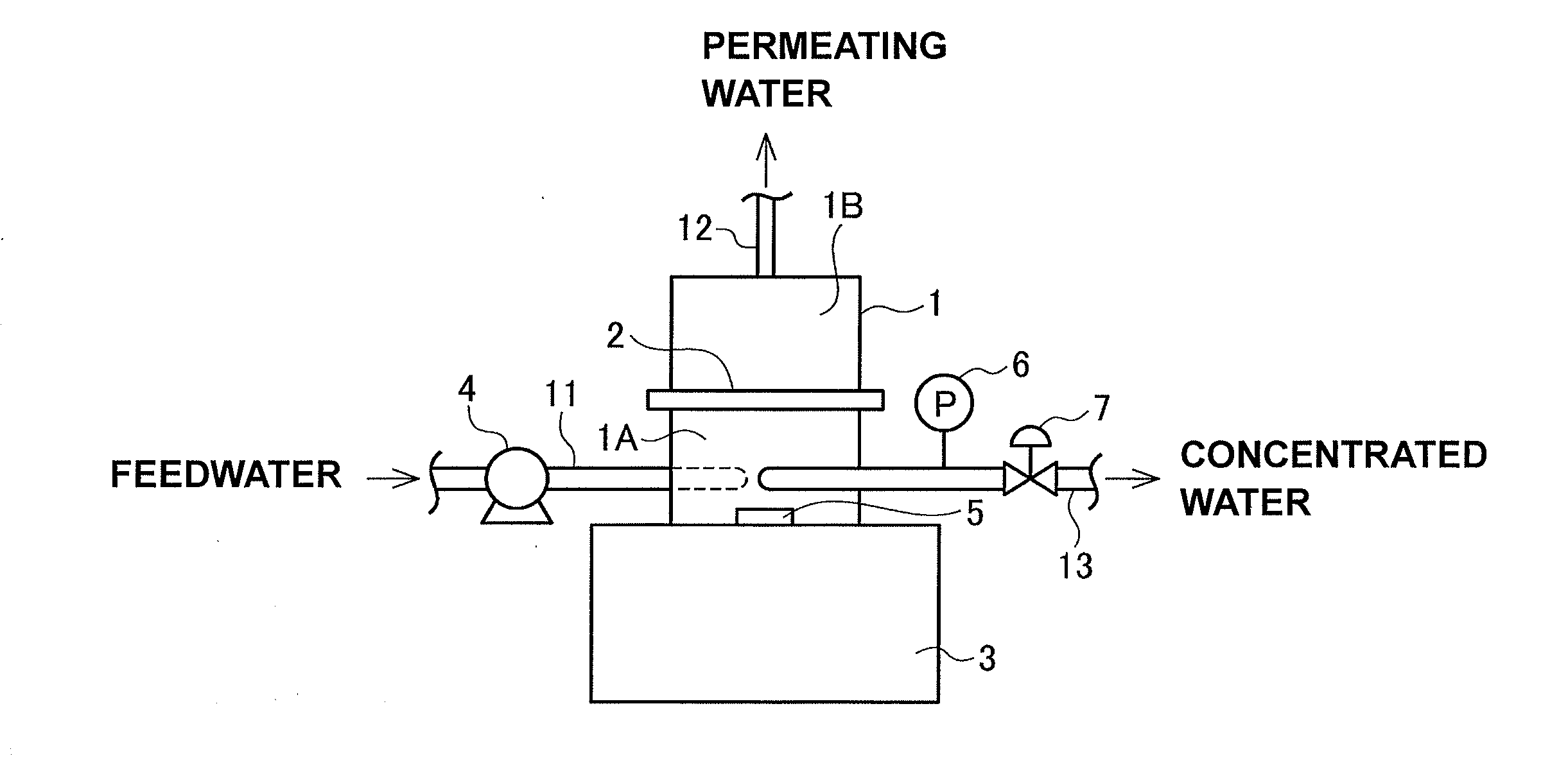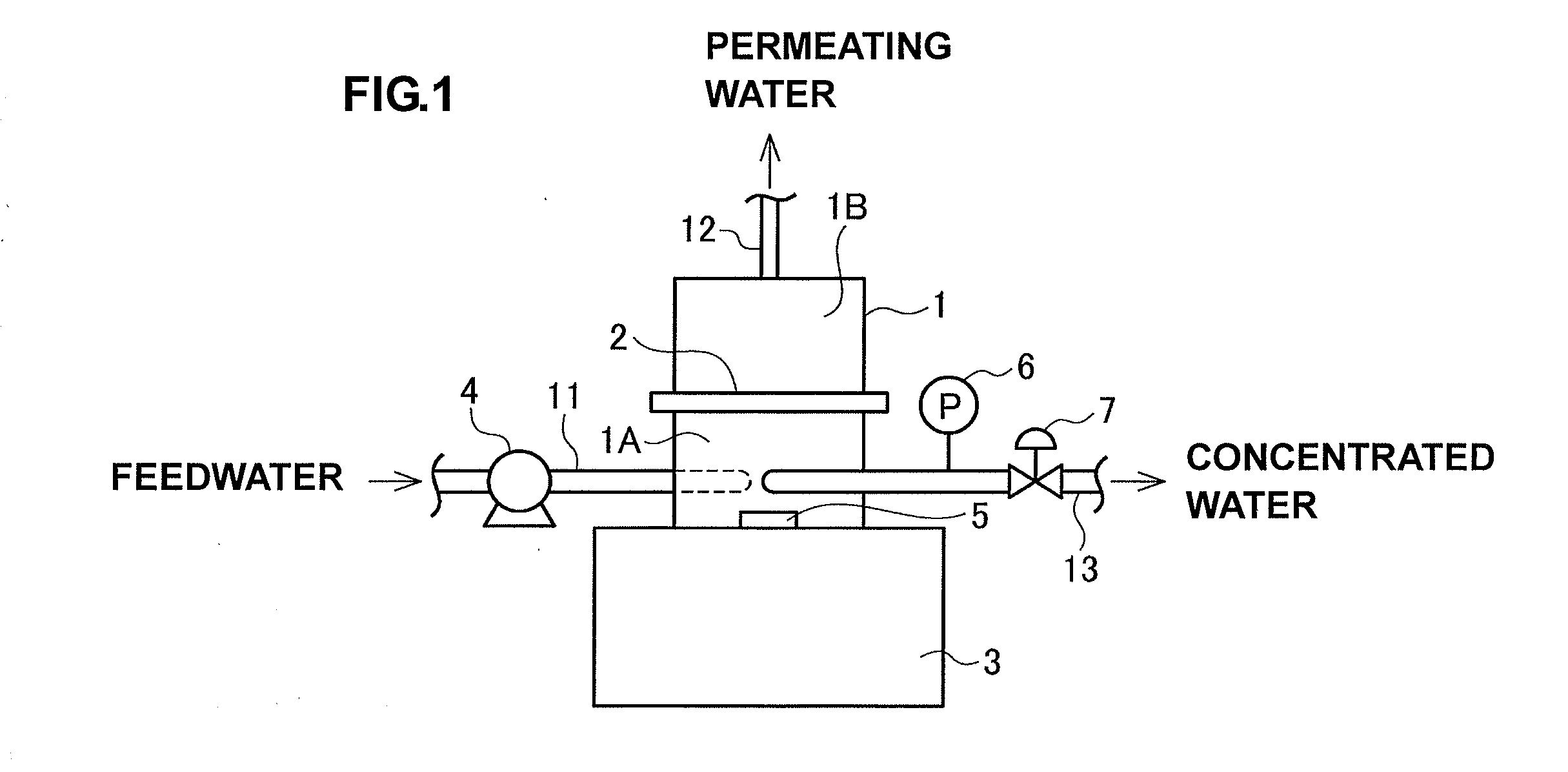Water treatment method and water treatment flocculant
a technology of water treatment method and flocculant, which is applied in the direction of multi-stage water/sewage treatment, manufacturing tools, separation processes, etc., can solve the problems of large amount of components that are not flocculated and remain dissolved in water, inability to use agents as water treatment flocculants, and inability to effectively flocculate and remove contaminants, etc., to achieve the effect of reducing the contamination of treated water, high melting point, and efficient flocculation and removal contaminants
- Summary
- Abstract
- Description
- Claims
- Application Information
AI Technical Summary
Benefits of technology
Problems solved by technology
Method used
Image
Examples
examples
[0122]The present invention will be further described in the following examples.
[0123]In the following description, “%” refers to “% by weight”.
[0124]The melting point, measured in accordance with described above, of a sample prepared in accordance with described above is referred to simply as “melting point”. The catalog value of a resin or the melting point of a sample resin not dissolved in an alkaline solution is referred to as “original resin melting point”.
[Production of Alkaline Solution of Second-Order Reaction Phenolic Resin]
[0125]RESITOP PSM-6358 and PSM-4324 manufactured by Gun Ei Chemical Industry Co., Ltd were used as raw material resins. These products are novolak phenolic resins produced by polycondensation between phenol and formaldehyde in the presence of an acid catalyst and have the following melting points, weight-average molecular weights, and low-molecular-weight component contents.
TABLE 1PSM-6358PSM-4324Original resin melting point6763(° C.)Melting point7167...
example i-1
[0127]41 g of PSM-6358, 146.2 g of ion-exchanged water, and 12.8 g of 48% aqueous sodium hydroxide in a beaker were dissolved while stirring with a magnetic stirrer to yield 200 g of an alkaline solution of a novolak phenolic resin that contains 20.5% PSM-6358. This solution had a pH of 12.4.
[0128]A 200 mL Erlenmeyer flask having a stopper was charged with 100 g of an alkaline solution of PSM-6358 and was heated to approximately 60° C. 4.43 g of 37% formaldehyde aqueous solution was added to the alkaline solution. A condenser, a tube for blowing nitrogen gas for agitation, and a thermometer were attached to the stopper. Formaldehyde addition and polycondensation of a resole type were performed in an oil bath at a liquid temperature of 85° C. for 8 hours (a resole-type second-order reaction). The amount of formaldehyde used here corresponds to 28% by mole based on the phenol ring (molecular weight 106) of PSM-6358 (PSM-6358: 20.5 g, 20.5 / 106=0.193 mol, formaldehyde 4.43×0.37=1.64 g, ...
example i-2
[0129]An alkaline solution of a second-order reaction phenolic resin (hereinafter referred to as “synthetic product B according to the present invention”) was prepared in the same manner as in Example I-1 except that PSM-6358 was replaced by PSM-4324.
PUM
| Property | Measurement | Unit |
|---|---|---|
| melting point | aaaaa | aaaaa |
| melting points | aaaaa | aaaaa |
| melting points | aaaaa | aaaaa |
Abstract
Description
Claims
Application Information
 Login to view more
Login to view more - R&D Engineer
- R&D Manager
- IP Professional
- Industry Leading Data Capabilities
- Powerful AI technology
- Patent DNA Extraction
Browse by: Latest US Patents, China's latest patents, Technical Efficacy Thesaurus, Application Domain, Technology Topic.
© 2024 PatSnap. All rights reserved.Legal|Privacy policy|Modern Slavery Act Transparency Statement|Sitemap


